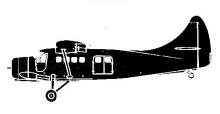Incident Overview

Description
The aircraft accelerated slowly in the slush, and the pilot rejected the takeoff. He selected a different takeoff run, moved a passenger to a forward seat, and attempted a second takeoff. The pilot continued beyond his previously selected rejection distance. The engine revolutions per minute (rpm) then reportedly decreased by about 150 rpm. The aircraft did not become airborne, and it ran into the low shoreline and crashed, skidding to a stop about 300 feet from the shore. An intense fire broke out immediately. The passengers and pilot evacuated the aircraft. Only one passenger suffered minor burns during the evacuation. Flames engulfed the main fuselage and engine, destroying the aircraft. CAUSES AND CONTRIBUTING FACTORS: “The pilot continued the take-off run with the left ski firmly adhering to the slushy surface beyond a point at which a reject could have been made safely. Contributing to the occurrence was the decrease in engine rpm during take-off.”
Primary Cause
Pilot error and deviation from established takeoff procedures due to the slushy conditions.Pilot error and deviation from established takeoff procedures due to the slushy conditions.Share on:





